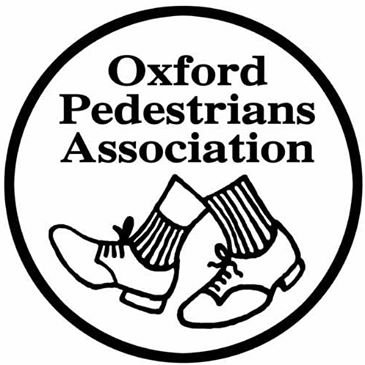“A vision for a sustainable city”
Speaker: Peter Headicar, Reader in Transport Planning, Oxford Brookes University
We have to ask why is it so difficult for walking/cycling campaigns to succeed, in spite of the official positive rhetoric in UK? We are still overshadowed by social/cultural dominance of the car in our society – the “car culture”. There is a deep-rooted disposition towards private motorized vehicle use, which works against any move towards sustainable modes of transport. (Note the vitriol against speed cameras – worse than against child pornography – epitomizing the sense that drivers should not have to submit to any limits.
There is an uneasy sense of unfinished business in the way traffic dominates our towns and cities, and carbon dioxide reduction targets challenge the basis of our current behaviour. How could such a travesty as St Giles have come about? Our best street, treated like a car park with dual carriageway. It took a century to get like this, with a misguided sense of ‘progress’ from walking to cycling to bus to private car ownership. Motorcars confer social status, with an underlying ethos of ‘the bigger and faster the better’.
Now the peak oil crisis and dangerous pollution from vehicles may force a change in transport habits. Best prospects may come from addressing this motorists’ dilemma – leading to a “sustainable coalition” between drivers and walkers/cyclists. Oxford may be a good place to start compared with comparable sized towns with smaller alternative modes of travel. Oxford has 0.4 cars per head and 60% commute without using a car; most other towns and cities are much more dominated by cars.
In 1926 there were 6000 road deaths attributable to motor cars, and the majority of these deaths were not motorists themselves. This led to campaigns for restrictions to protect vulnerable road users. From 1930 onwards, motorists have been “affronted” by any suggestion of blame for road casualties and by any measures to reduce them – speed limits, crossing, cycle lanes etc. Until the 1960’s the vast majority of car drivers were men.
Buchanan (1960) assumed that the car would dominate and as this was unquestioned, he wrote of a need to segregate and adapt towns to suit the motor car. Some new towns, for example Milton Keynes, were designed for cars, public transport and bicycles not expected to survive. The result was low-density widely dispersed settlements joined by a wide grid of roads with their roundabouts. There are 0.7 cars per head in Milton Keynes. “Cars for cities” (Marples 1964) suggested adapting vehicles to fit in with how cities are, but this was not enacted so we still have long distance large cars doing short town trips.
The Oxford Transport Strategy moved rather than reduced traffic, by building Frideswide Square to hold queues going round what was designated an unofficial inner ring route (Hythe Bridge Street, Worcester Place, Beaumont Street, St Giles, the science area, Longwall Street). We still have long queues in Botley Road, and elsewhere, at an unknown commercial cost.
The solution has to be an inner cordon congestion charge to discourage cross-city drives. Parking (public) charges could be reduced by the congestion charge amount, and revenues used for alternative transport improvements. Congestion charges could be lower for Low Emission Vehicles. So, give a 5-year warning then create a Low Emission Zone in the central cordon where drivers are charged according to size of their vehicles and the severity of the pollution from their engines.
Parking in residential areas takes up an unacceptable amount of road and pavement space. We need methods of reaching edge of town car parks or interchanges. There could be priority parking for car clubs, and differential charges for low-emission vehicles. Motor manufacturers need to be encouraged to make smaller less polluting models.
Discussion topics included:
- shortage of charging points for electric vehicles.
- need to design smaller fire engines for narrow roads
- need to measure number of trips each institute/business etc generates
- knock-on effects in suburbs of central LEV zone
- need to provide bus passes for young people as well as OAP (eg 50% reduction each) to encourage public transport use at younger ages.
